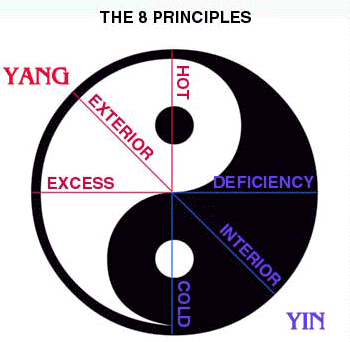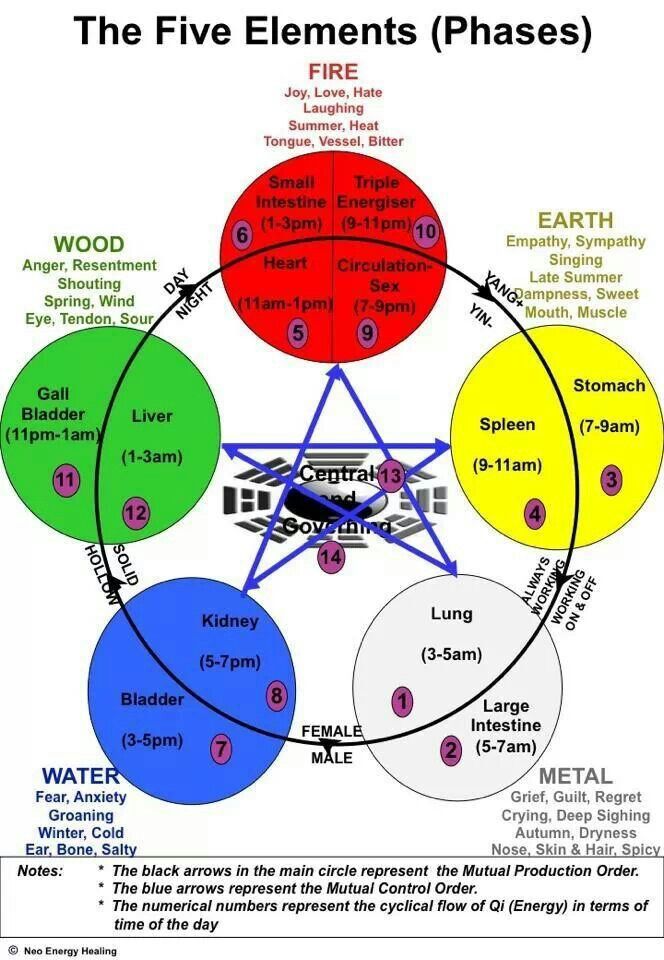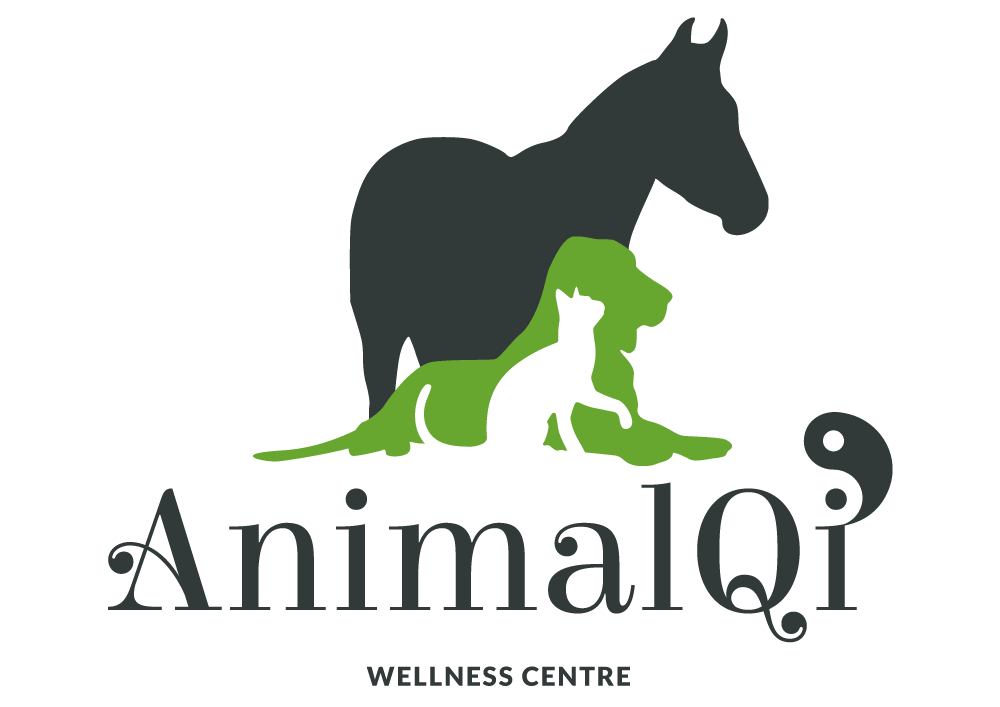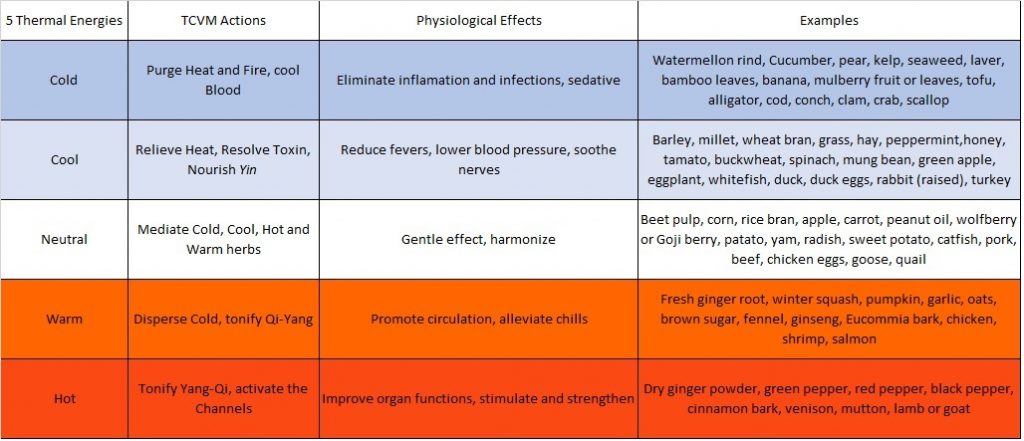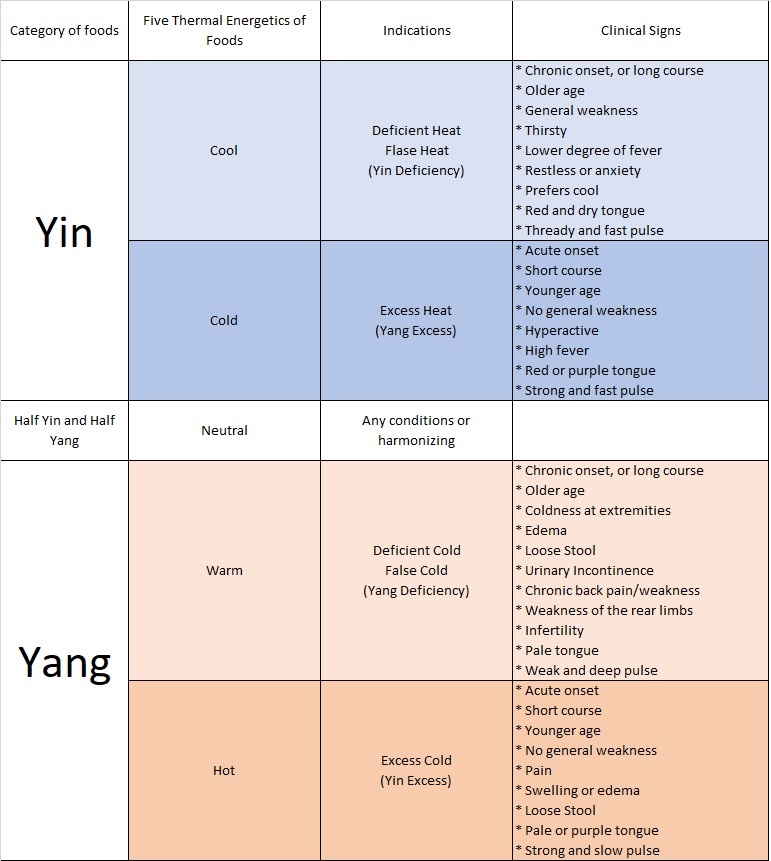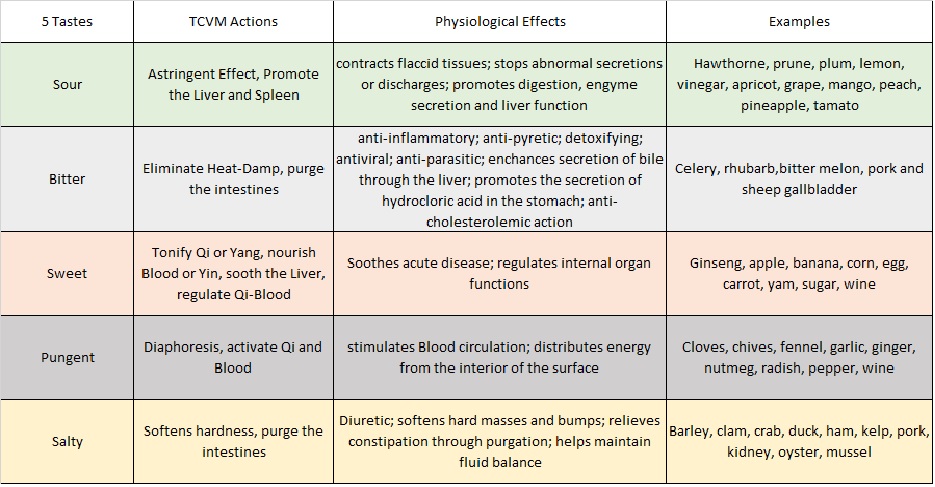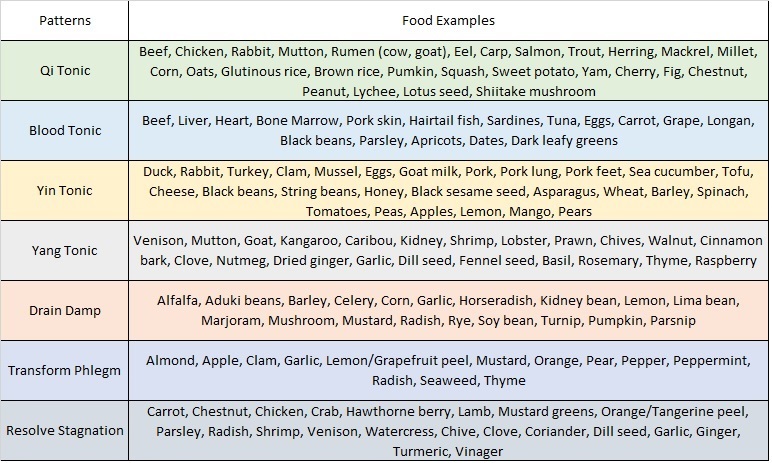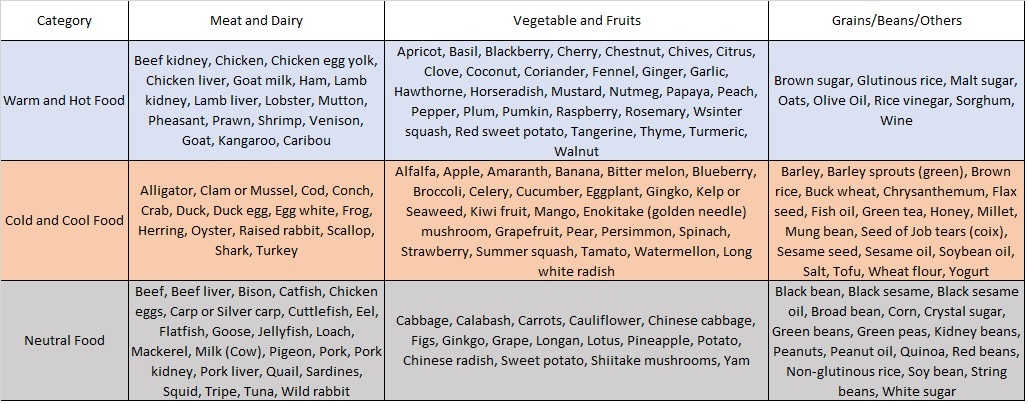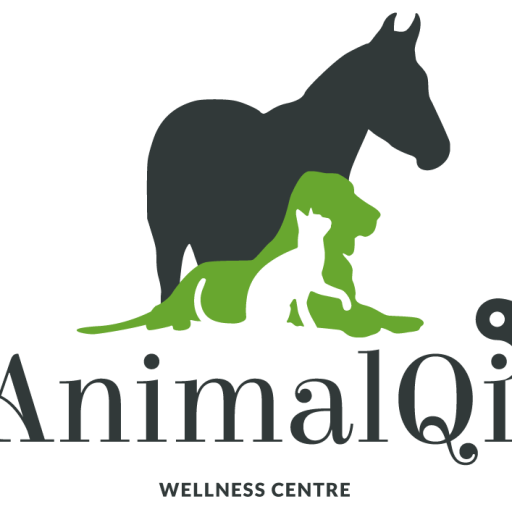Information
What is Food Therapy?
Food has been used as medicine in China in both humans and animals for thousands of years. Food as medicine was initially recorded in Zhou-Li written during the Zhou Dynasty (1046 BC to 256 BC). Food therapy is the art and science of using selected food ingredients and/or superior herbs to feed each individual based upon their inborn tendencies, age, species, geographical location, personality, and current disharmony or disease process. The goal is to treat or prevent illness and maintain health by using the foods according to Traditional Chinese Medicine (TCVM) fundamental principles. The main fundamental principles of TCVM food therapy are Xing/Thermal Energetics, Wei/Tastes, Brain Zheng/Pattern Differentiation and cook pot analogy.
Xing or Thermal Energetics of foods
An Ancient Oriental Healing Art.
Pathogenically, Xing refers to the nature or basis of a disease, which consists of two major categories: Hot and Cold conditions.
Hot conditions include: Heat, Heat toxin, Damp-heat, Summer Heat, Yang excess pattern or False heat due to Yin deficiency. These hot conditions are often called Yang disease.
Cold conditions refer to Cold, Damp, Yin excess pattern or False cold due to Yang deficiency. These cold conditions are also called Yin disease.
Therapeutically, Xing is the thermal nature or energetics of each herb or food. Huang di nei jing defines the most important TCVM treatment principle: hot conditions are treated with cold, while cold conditions are treated with heat. The Xing of foods simply refers to the primary post-indigestion effect of food on an individual’s body.
The various methods of food preparation can alter the energetics of foods. The initial Xing or thermal property of a food changes from most cool to most warm in the following order:
- Raw, chilled-most cool.
- Steamed or poached-cooling.
- Boiled-neutral.
- Stir-fried-mildly warming.
- Casserole/baked-most heating.
Foods have both Xing and Wei. Xing is the Qi (energy) of foods. The Qi is the light, aromaic part of the food derived from its property, nature and aroma. The Wei, meaning taste, is the substantial, nourishing aspect. Food that is not fresh rapidly loses its Qi.
Wei / 5 Flavours of foods
An Ancient Oriental Healing Art.
Bitter (Fire) – has draining and counteracting dampness quality.
Sweet (Earth) – has tonifying and moistening quality.
Pungent (Metal) – has dispersing quality that promotes Qi and blood flow.
Salty (Water) – has softening and detoxifying quality.
Bland (Water) – drains dampness from the body.
Xing or Thermal Energetics of foods
Horses and companion animals have relative different TCVM patterns, even when in good health, depending upon their various life stages, including pregnancy, parturition and nursing.
Example: Nursing mothers and growing puppies consume Qi; thus, Qi-building foods should be used daily. Nursing consumes massive amounts of blood to form its modified ultrafiltrate called milk, therfore, blood tonifying foods should be fed every day to nursing mothers.
Principles and Elements (Phases)
